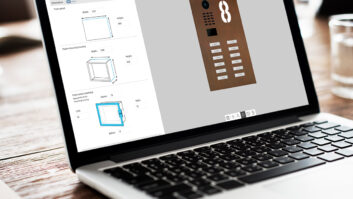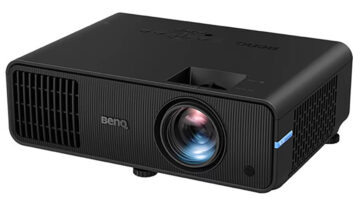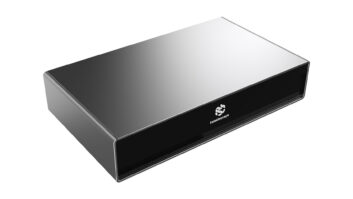Let’s get it out there: A lot of things about the 3D movie-watching experience just plain suck.
First there is the price premium for the ticket. Then there are the glasses (does anyone else feel like their eyes are going blurry like every 15 minutes? Anyone?!) Then there’s the headache and eye fatigue from two hours of trying to focus and refocus your eyes all over the screen. Then there’s the rush to market with lame titles that have suddenly been converted to ride the Avatar-3D train at the last minute. (I’m kinda looking at you Clash of the Titans…)
If you’ve been skeptical of 3D like I have, then put down your flame hammer for a minute, because instead of defending it Sony actually agrees that 3D is being butchered. And even better, they want to fix it.
Last week Sony invited a small group of journalists to come out and hear about their plans for its ES (Elevated Standard) line of components. The event was all pretty boilerplate press event stuff (except they put us up in an awesome hotel; if you ever wanted to be jealous of the life of an A/V journalist, click that link…) Then — like everybody else — they started talking about 3D. Although this could have easily turned the corner from the routine to mind-numbingly lame, it actually got super interesting.
Like all major A/V companies today, Sony feels that 3D is going to play a massive role in the future of home entertainment. However, unlike all the other companies, Sony is uniquely poised to take advantage of 3D because they are involved with 3D at the creation level through its Sony Pictures division. Sony Image Works has handled more 3D than anyone, including films like Beowulf, Polar Express, Alice in Wonderland, G-Force, and Cloudy with a Chance of Meatballs. To drive this point home, they packed us into a bus and drove us to the lot to show us their commitment to 3D and educate us about why making 3D is easy, but why making it look good is hard.

Chris Cookson, president of Sony Pictures Technologies and chief officer of Sony 3D Technology Center
We were led into Sony’s 3D Technology Center where, after an introduction from Sony Pictures Technologies president Chris Cookson, we met Buzz Hays, with the way-cooler-than-yours title of “executive stereoscopic 3D producer.” Hays gave us a wonderful overview of the creation process behind making 3D. He has been involved with seven of Sony’s last eight 3D films, and he stressed early on that 3D technology is not the problem; the content is the problem. Specifically, filmmakers — directors, cinematographers, and film editors — need to understand the content and how to properly handle it to not only tell a better story but to keep from making the audience sick.
What Sony discovered was that for many filmmakers, their first experience in working with 3D often comes when they step foot on the set. And learning on the job in Hollywood can get expensive real quick and result in a hot celluloid (actually digital) mess. To address this, Sony started an intensive three-day training course, which is offered totally free of charge to industry professionals, to share what they’ve learned with other studios and filmmakers. The course educates cinematographers on how to shoot and work in 3D and gives them a chance to experiment with real cameras, shooting, editing and critiquing footage in a classroom setting. So far, 300 DPs have gone through the class, and there’s a huge waiting list behind them.

Training the next generation of 3D filmmakers on a set from Spiderman
We journalists received a crash course in 3D filmmaking and learned that there are four primary things that come together to make 3D work or make it hurt. (Granted, this is an oversimplification of the filmmaking process; there are probably at least five things…) First is what’s called “interaxial distance,” or the space between the two camera lenses, which dictates how “deep” a shot feels. When the cameras are too far apart it minimizes subjects in the frame and makes objects look too small. Depending on the movie — or the shot — this may be the desired effect; or you might end up making the Eiffel Tower look about three feet tall.
The second thing is the convergence of the cameras, or rotating each camera to determine the point in space where the two camera lenses cross. This determines the focus of the shot.
Another big challenge is re-learning how to use lighting and focus to direct a viewer’s eye to the proper area on the screen and using the interaxial and convergence to establish the right balance of depth and focus.
Finally is “vergence accommodation,” which is the biggie that can cause 3D to become uncomfortable. As objects move toward and away from us, our eyeballs move in and out to keep the object in focus (think of a camera lens). But when viewing 3D movies, as objects break the Z-axis and come toward or away from you, your eyeball is moving but still focusing on the object on the flat screen. Asking your eyes to do this too much or too strenuously is what causes discomfort.

Cinematographers experiment with a 3D camera rig on Sony’s lot)
However, Hays stressed that 3D is not the cure all for Hollywood’s woes. “If you don’t know how to tell a story, 3D isn’t going to help you,” he said. “3D is just another tool that offers a new way to help tell a better story.” (You hear that Gigli? You’d still suck in 3D.)
Also, in a comment that he acknowledged Sony was going to hate, Hays added that effective conversion from 2D to 3D “can’t be done in real time inside the TV. You can’t ask a computer to make these complicated decisions. Doing that properly requires the human element.”







